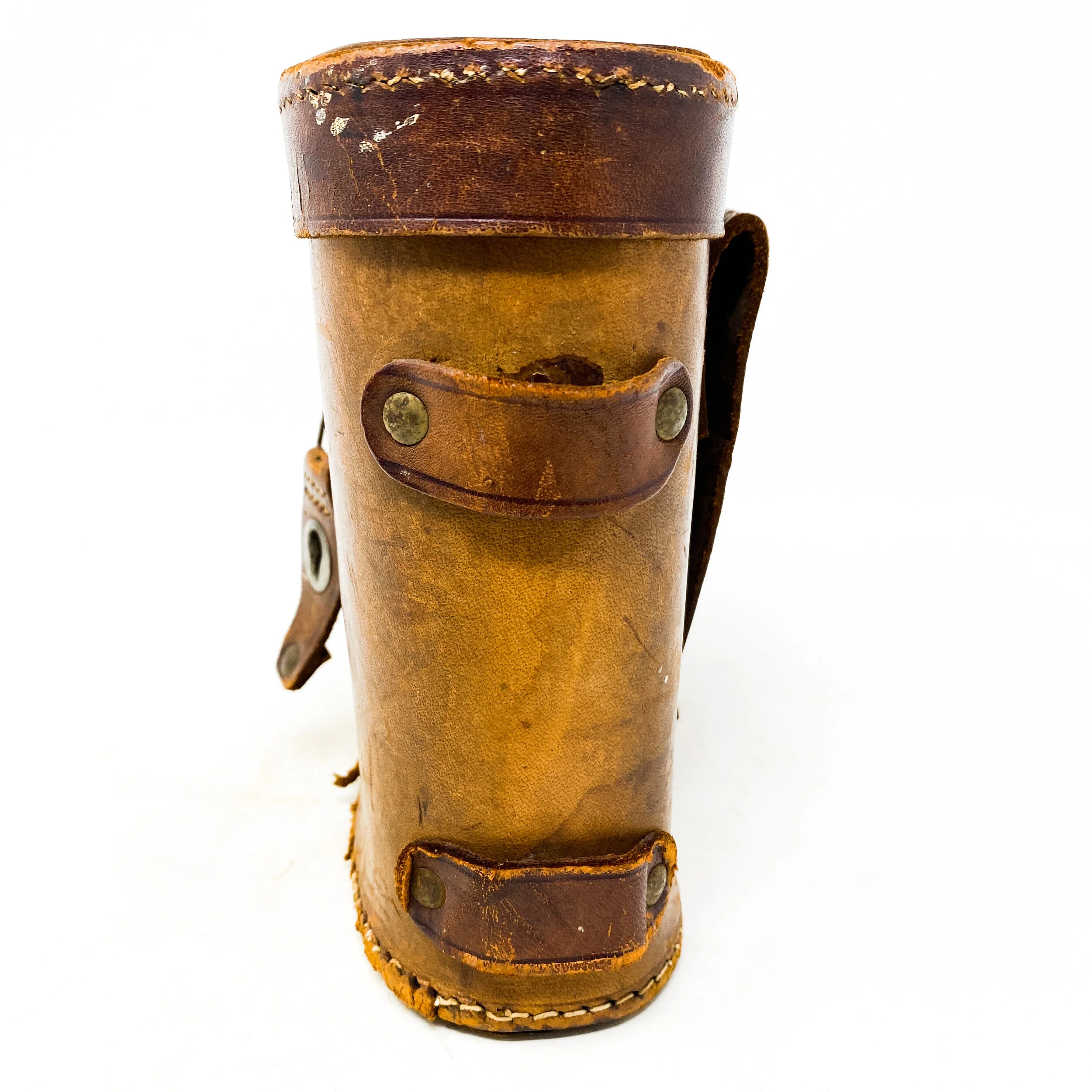WWI Captain H. K. Honey 25th Trench Mortar Battery Binoculars & Case




















WWI Captain H. K. Honey 25th Trench Mortar Battery Binoculars & Case
These WWI French Hunsicker & Alexis Binoculars with the original case were carried on the front lines by an identified British Captain of the 25th Infantry Brigade serving within the 25th Trench Mortar Battery (formed in February 1916). On the front of the barrels is engraved Hunsicker & Alexis, Paris and M.G. The original leather strap and leather case are included. The bottom of the case contains a handwritten inscription Capt. H. K. Honey. They are in very good condition for their age and are in working order except that one of the adjustable lenses is frozen in the open position and the front of the bottom of the case is slightly frayed.
Capt. H. K. Honey fought in the Somme as well as other notable battles during WWI. These binoculars were used to sight mortar firing positions on attacks and defense of enemy soldiers.
25th Trench Mortar Battery:
In early 1916, the brigade gained a trench mortar battery and a machine gun company. It then fought on the Somme, notably the Battle of Albert on the first day and the attack on Le Transloy on 23–30 October 1916.
In 1917, the brigade took part in operations to follow the Germans in their retreat to the Hindenburg Line (14 March–5 April). It then took part in the Third Battle of Ypres, notable the Battle of Pilckem Ridge (31 July–1 August), the Attack on Westhoek (31 July) where the brigade commander, Brigadier-General Coffin, won the Victoria Cross, and the Battle of Langemarck (16–18 August).
The brigade's machine gun company was moved to the divisional 8th Battalion, Machine Gun Corps on 20 January 1918. In addition, British divisions on the Western Front were reduced from a 12-battalion to a 9-battalion basis in February 1918 and the brigade from four to three battalions. Thereafter, the brigade commanded three infantry battalions and a trench mortar battery. 1918 saw the return of the war of movement. It had to withstand the German Spring Offensive in the First Battles of the Somme – Battle of St Quentin (23 March), Actions at the Somme Crossings (24 and 25 March), Battle of Rosieres (26 and 27 March), and Action of Villers-Bretonneux (24 and 25 April) – and the Third Battle of the Aisne (27 May–6 June). It then switched over to counter-attack in the Second Battle of Arras (Battle of the Scarpe, 26–30 August) and the Final Advance in Artois in which the 8th Division captured Douai (17 October).